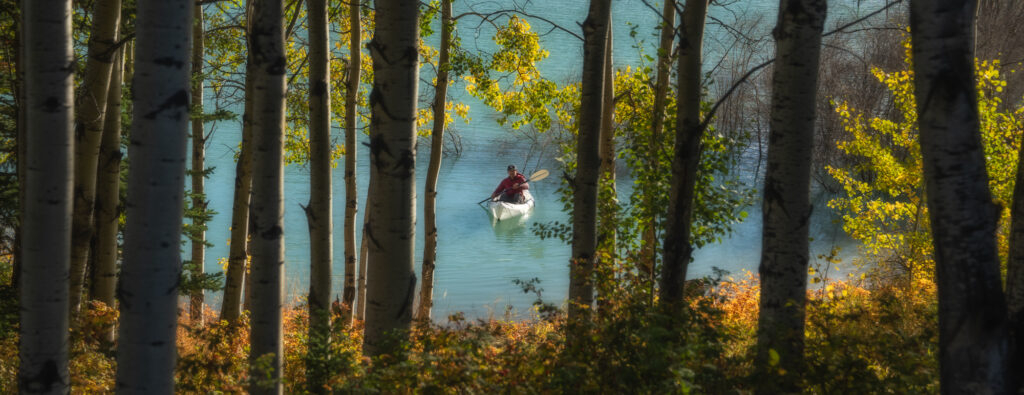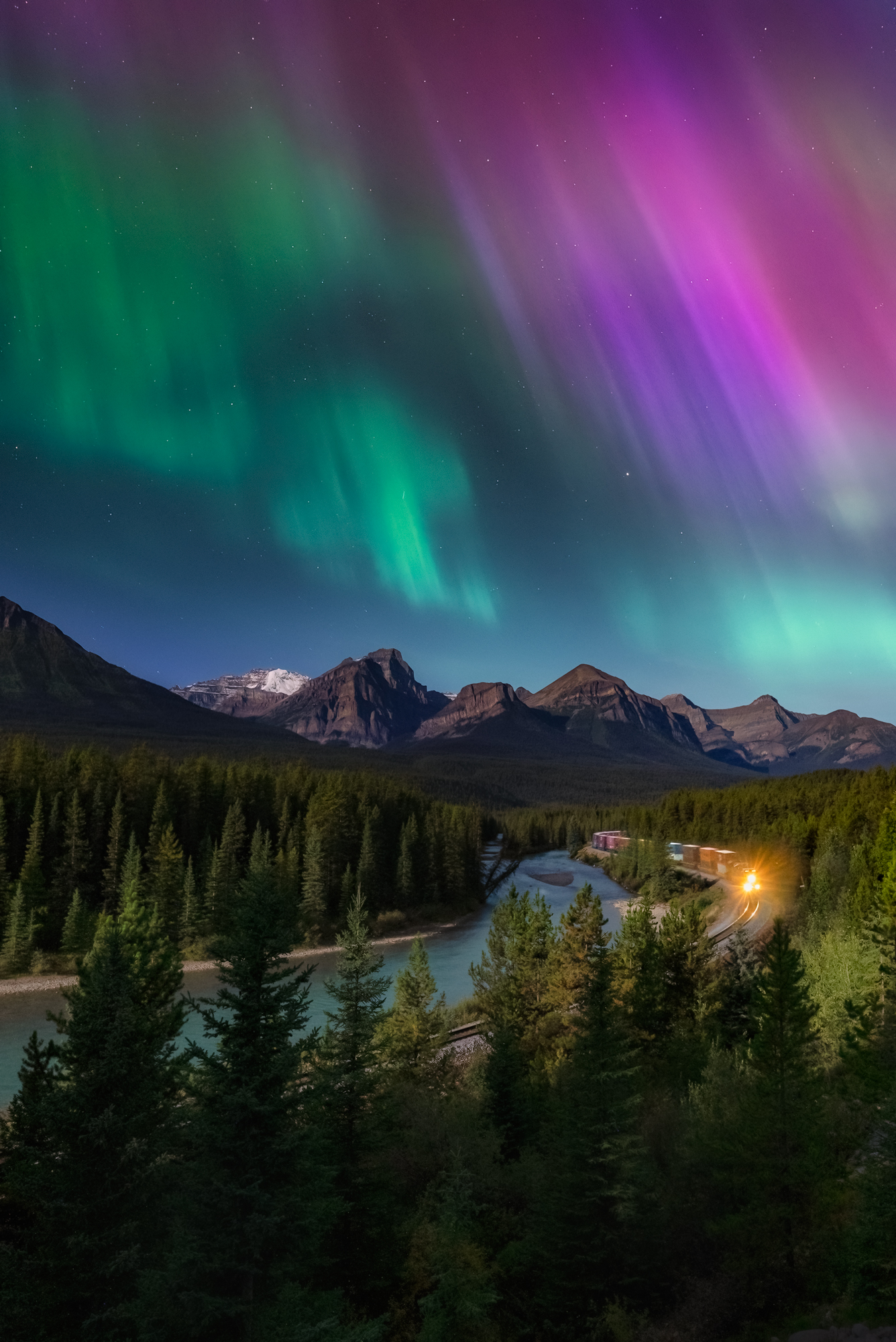
Canadian Rockies: Autumn Edition
Prepare to fall for fall in the Canadian Rockies Photography Workshop – Autumn Edition September 2026 and 2027!
The sheer immensity of the landscape will leave you breathless. Although the Canadian Rockies are not typically as tall as their neighbours in Colorado, the Canadian Rockies have a deeper valley floor, which makes them appear taller.
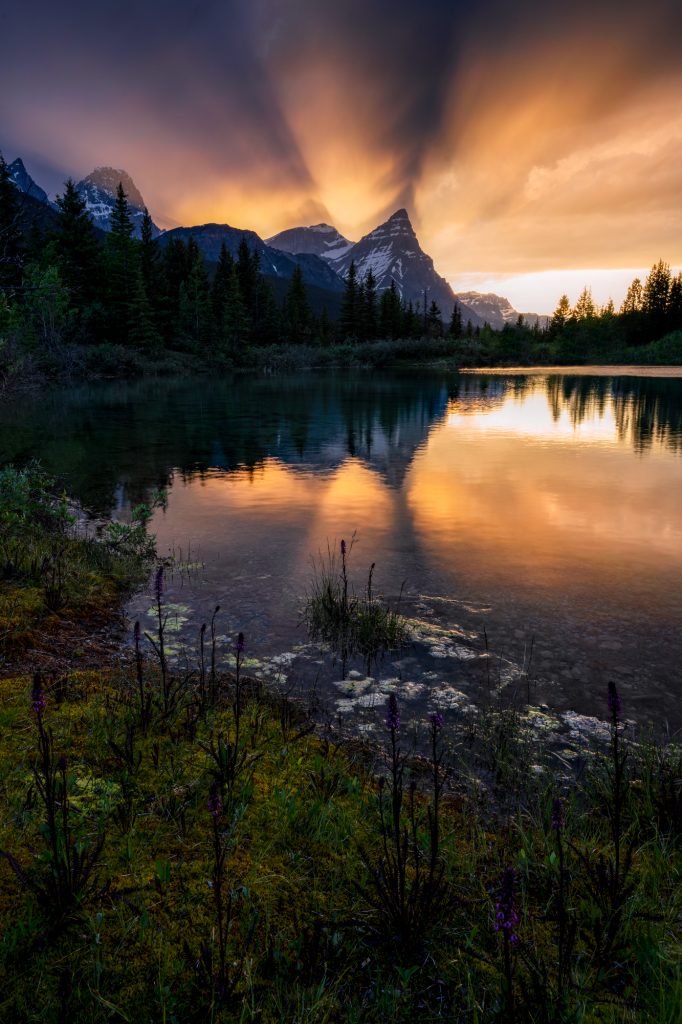
The vertical relief is the result of glaciation from the last ice age about 12,000 years ago. As the glaciers slowly crept across the landscape they carved immense swaths of rock and earth away from the mountainsides as they moved.
Glaciers also ground the rock beneath them into a fine flour which is now suspended in the many lakes of the Canadian Rockies. As light hits the water, the blue wavelengths of light are reflected off the rock flour, creating the jewel tone colours in the lakes that the Canadian Rockies are so famous for.
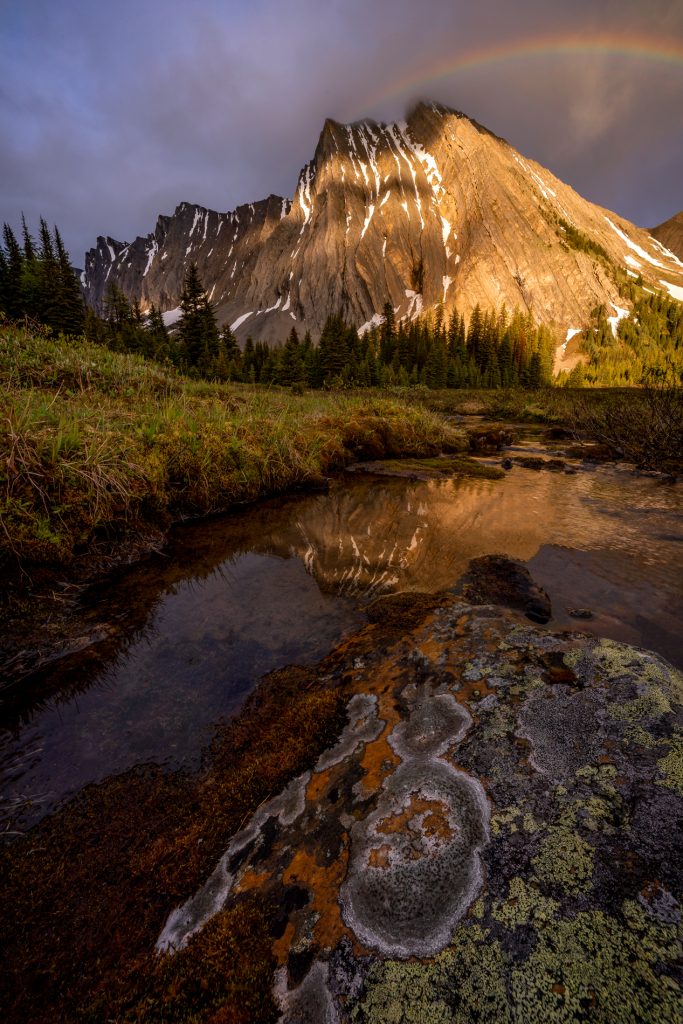
The changing of the seasons is brief but dramatic in the north. The falling temperatures conjure inversions of low clouds that hug the mountain tops, and lull the trees into an autumnal plunge of vibrant colour before their winter slumber.
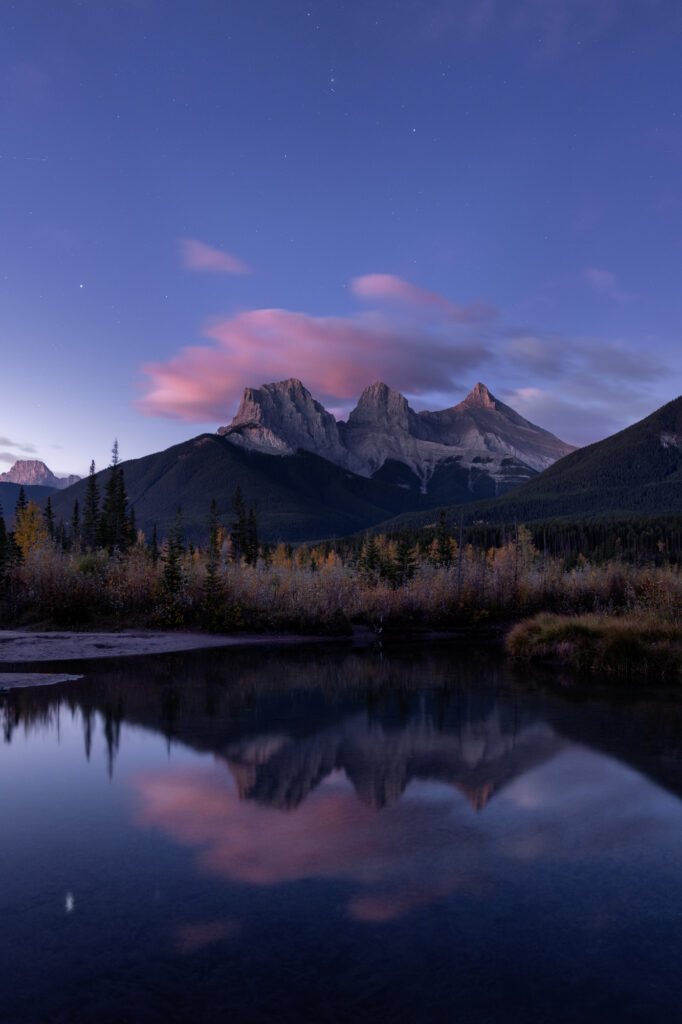
Autumn also heralds the aurora season. The weeks leading up to the autumnal equinox signal the start of aurora-watching season. From the first week in September through the end of October, the chances of seeing the dancing ribbons of the mysterious northern lights will be reaching a peak, as the aurora is most visible during the fall and spring equinox periods due to the angle of the earth in relation to the sun.
And, in the quiet stillness that settles over the front range of the mountains we will see bears fill their bellies before hibernation, elk and moose rutting, and birds flying south for the winter. If we are really lucky, we may also catch a glimpse of wolves, cougars, lynx or foxes.
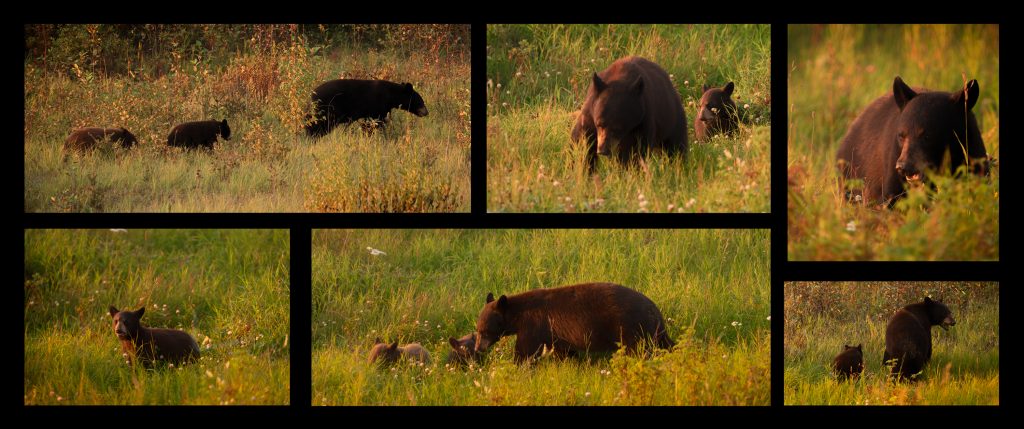
Canadian Rockies Photography Workshop – Autumn Edition
The Plan… The following is a typical plan for our time in the Canadian Rockies during our autumn expedition. Of course, Mother Nature doesn’t always cooperate so it’s important to be flexible and have alternate plans. For example, if it is raining in Banff I can just shuffle the plan for day two with day four, or skip a sunrise to shoot aurora. The goal is to maximize our chances of good light, atmospheric conditions, aurora, and wildlife encounters.
Day 1. Welcome to the Canadian Rockies!
It is Saturday morning…
And you have arrived at the YYC Calgary International Airport in Calgary, Alberta, Canada.
10:00 am: We will pick you up at the Hotel 11 by Sonesta next to the airport, and make our way to the majestic Rockies.
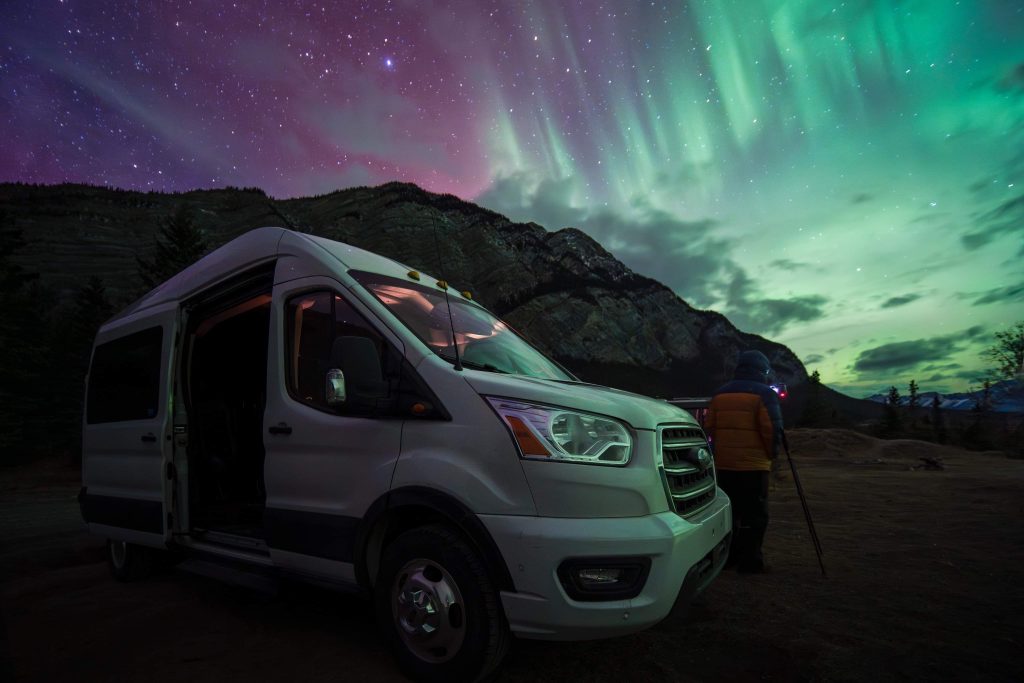
Because of the pristine nature of this famous mountain range, the Canadian Rockies have been included in the UNESCO World Heritage-list. The magnificent mountains stretch for about 180,000 km2 (69,500 mi2) through the provinces of Alberta and British Columbia.
12:30 pm: We arrive at the village of Canmore, located in the Bow Valley within Alberta’s Rocky Mountains. Check in at our accommodations begins at 4:00 pm. While we wait for our rooms to be available, we will visit the local grocery store to pick up snacks for the week. Then we will make our way to one of Canmore’s most iconic restaurants for lunch – The Iron Goat. 🙂
Once we are checked in, we will kick off the workshop with an expedition briefing. We will discuss the plan for the week, and, importantly how to shoot the aurora so you are prepared from day one.
6:00 pm: Today we’ll capture sunset and, if lucky, the Aurora at Lake Minnewanka, located in Banff.
Lake Minnewanka is a super large glacial lake. It’s 21 km (13 mi) long and 142 m (466 ft) deep.
The lake is surrounded by a stunning mountain range. Among the peaks, we find Mount Inglismaldie (2,964m or 9,724 ft) and Mount Girouard (2,995m or 9,826 ft).
But before the Sunset begins, I will point out my favourite compositions and give you a focus stacking demo, so you learn how to achieve a tack sharp images from front to back!
8:00 pm: What happens after sunset will depend on the Aurora forecast and the cloud layer. If there are chances of getting the Aurora dancing in the sky, we’ll stay and enjoy the show.
Tonight, the Moon (a 33% waxing crescent) rises at 3:28 pm and sets at 10:03 pm. The brief illumination on the landscape as night approaches will help use to capture the foreground in the moonlight if we see the aurora. If the aurora doesn’t come out to play we will go back to the hotel for a good rest because we will have an early start the next morning!
Photography Goals:
- Sunset, golden hour and blue hour at Lake Minnewanka.
- Aurora Borealis at Lake Minnewanka (if there is Aurora)
- Practise focus stacking
Day 2. The Two Lakes
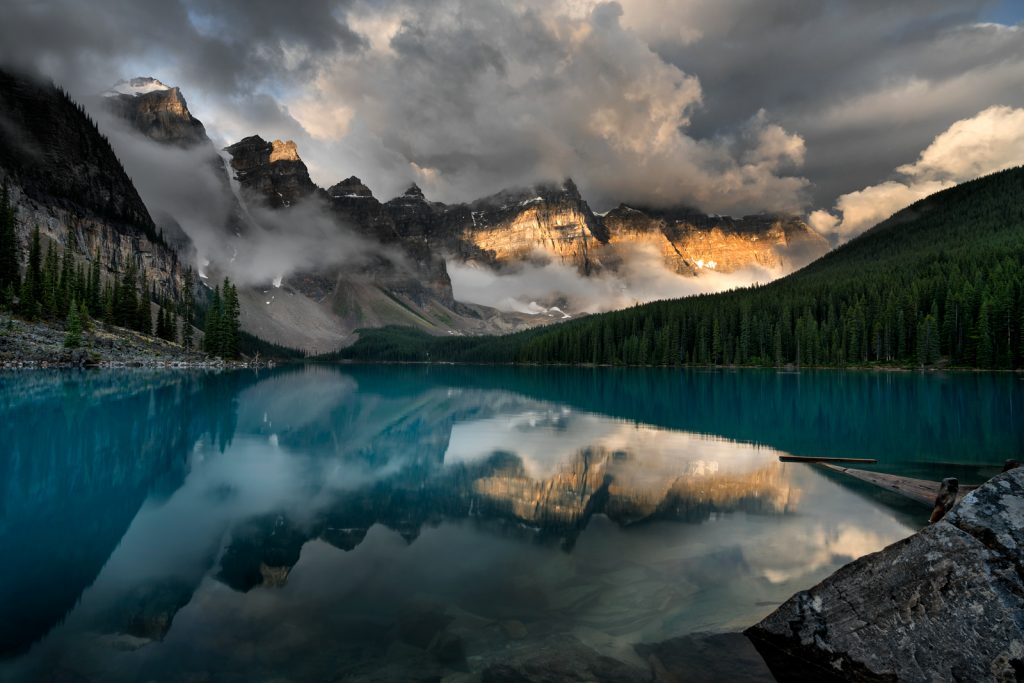
4:15 am: Rise and Shine! Sunrise awaits!
Nestled within the breathtaking embrace of the Valley of the Ten Peaks, Moraine Lake is more than just a body of water; it’s a turquoise treasure that seems to have sprung from the very essence of dreams.
The iconic vistas available from both the easily accessible lakeshore and the slightly elevated rock pile provide not only a feast for the eyes but also an unparalleled opportunity for photographers seeking that quintessential shot.
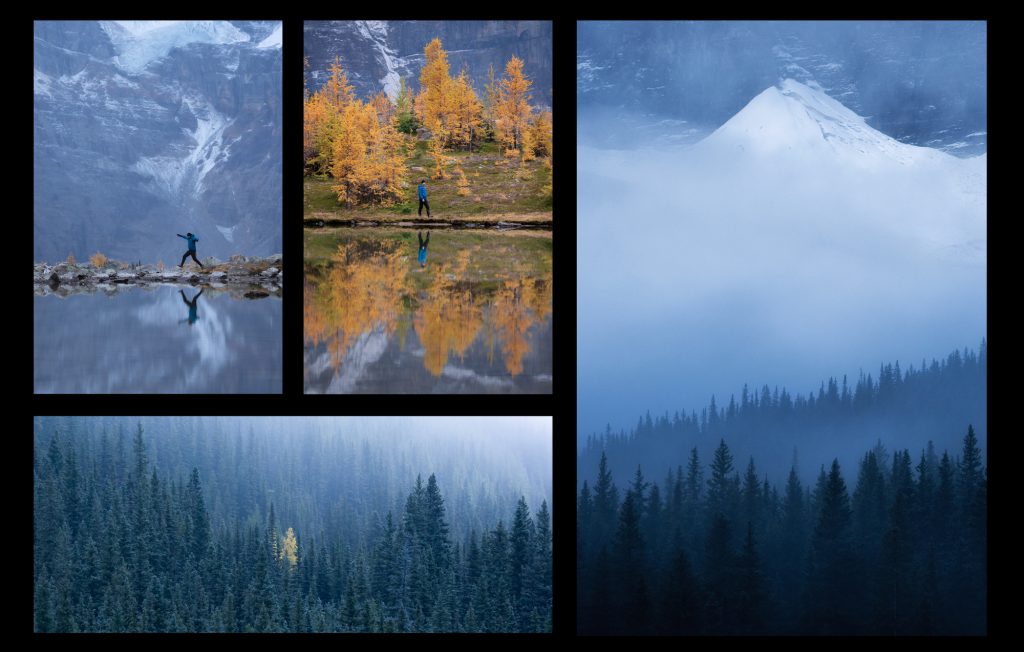
The lake is located at an elevation of approximately 1,884 m (6,181 ft) and has a surface area of 50 hectares (120 acres)!
And we’re lucky enough to have special access to the lake 🙂
6:00 am: Before Sunrise, I will demonstrate the properties of a wide angle lens, and how to use wide-angle distortion to capture captivating foreground elements, and balance compositions.
The sun rises behind us and to our left. As the sun rises, light will illuminate the valley of then ten peaks, and bring out the turquoise colour of the glacial lake.
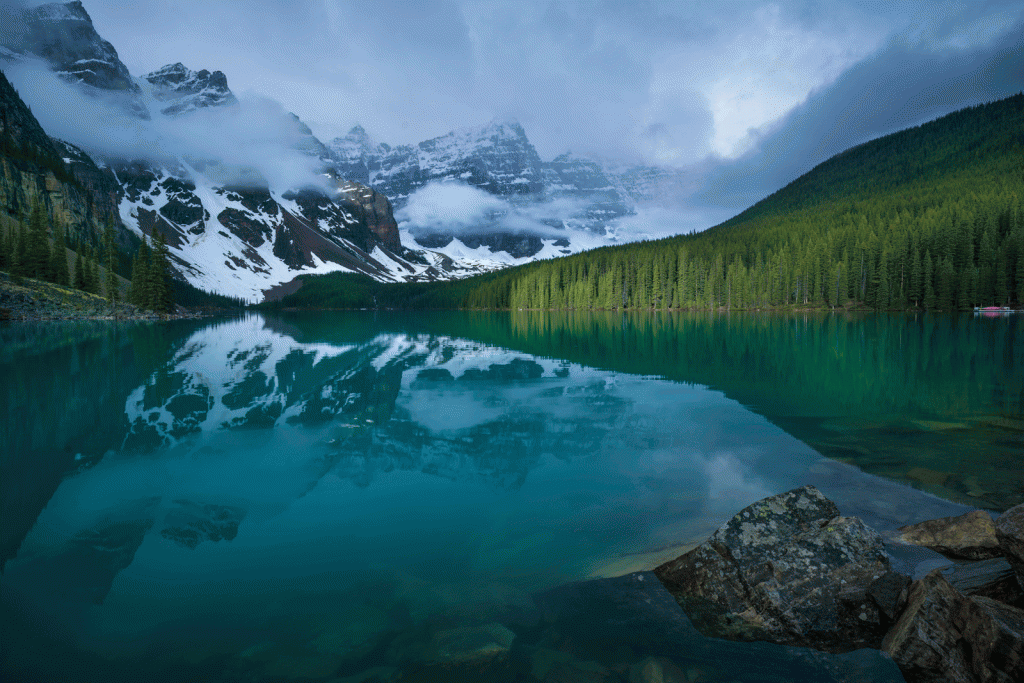
10:00 am: Breakfast at the legendary Trailhead Cafe. The food here is made of the freshest ingredients that make you feel good to eat. And despite how popular this little cafe is, food is made quickly allowing us to squeeze more shooting and exploring into our day.
We have a 2h 20 min drive to our next destination – the iconic Abraham lake.
This man-made lake boasts a serene and ethereal charm that sets it apart from other bodies of water. Stretching across vast expanses, Abraham Lake showcases a mesmerizing blend of azure blue waters and brilliant orange foliage on the aspens, creating a sight that is both enchanting and awe-inspiring.
1:30 pm: Our first goal here is to photograph the flooded Aspens. Ah! And also bring your drone. The views from above are truly breathtaking!
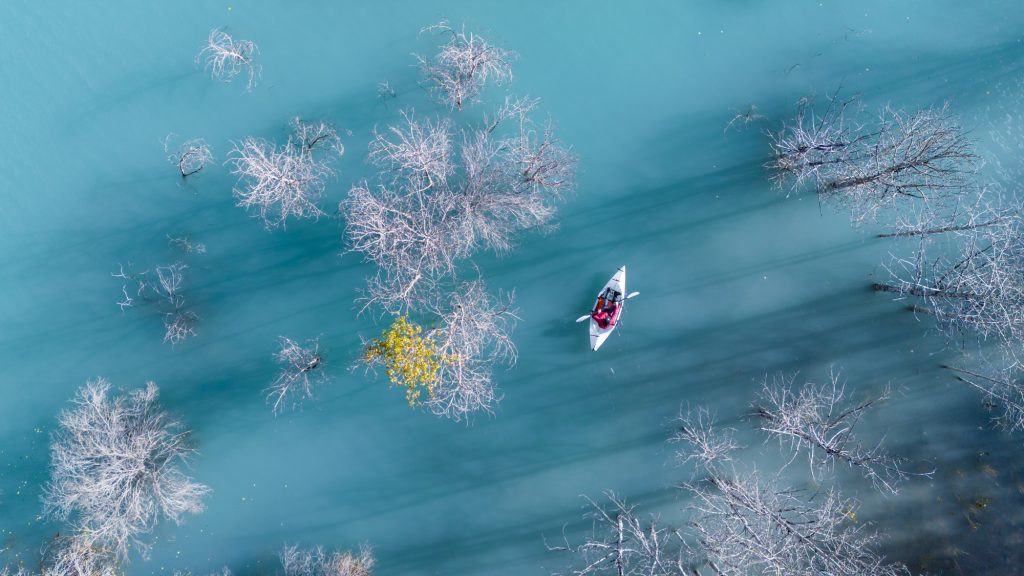
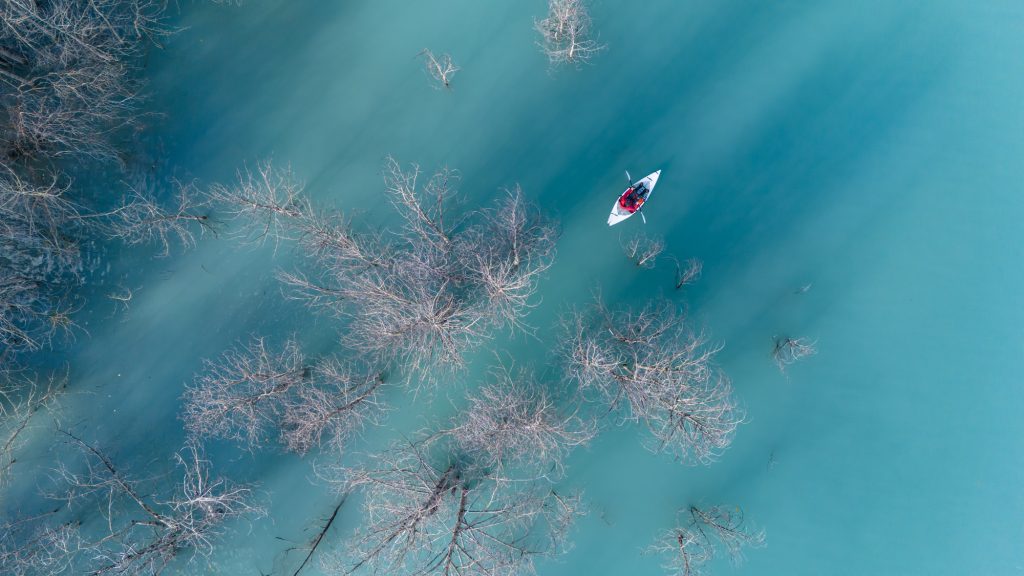
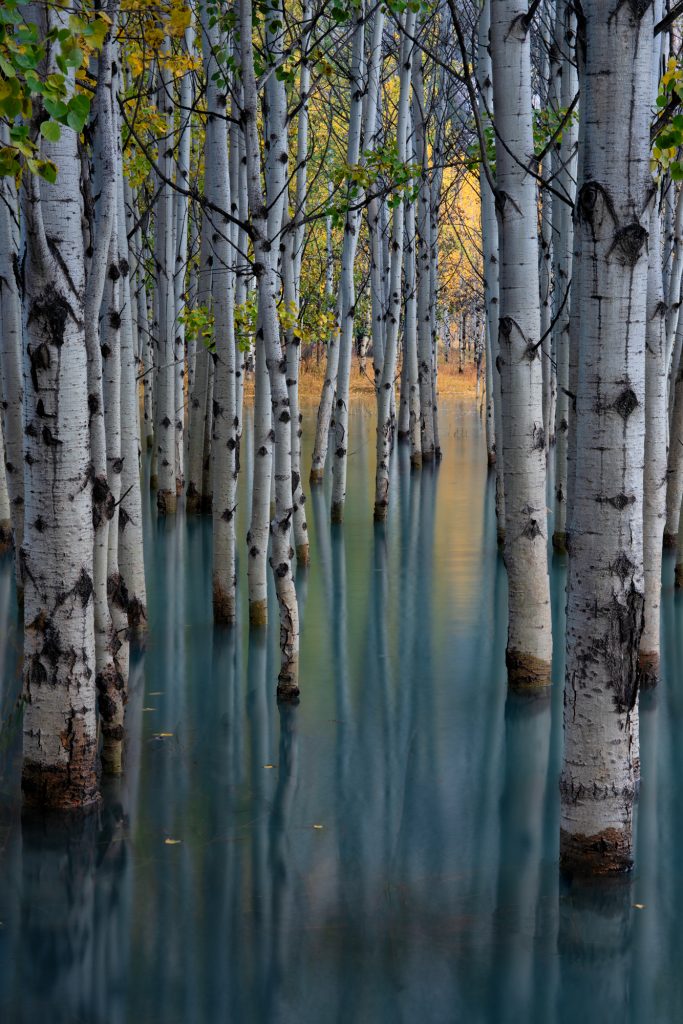
2:30 pm: Late lunch (Early diner) at the Miners Café in Nordegg. We can also grab a sandwich to go (the egg salad on home made bread is my favourite!) for a picnic along the lakeside during sunset.
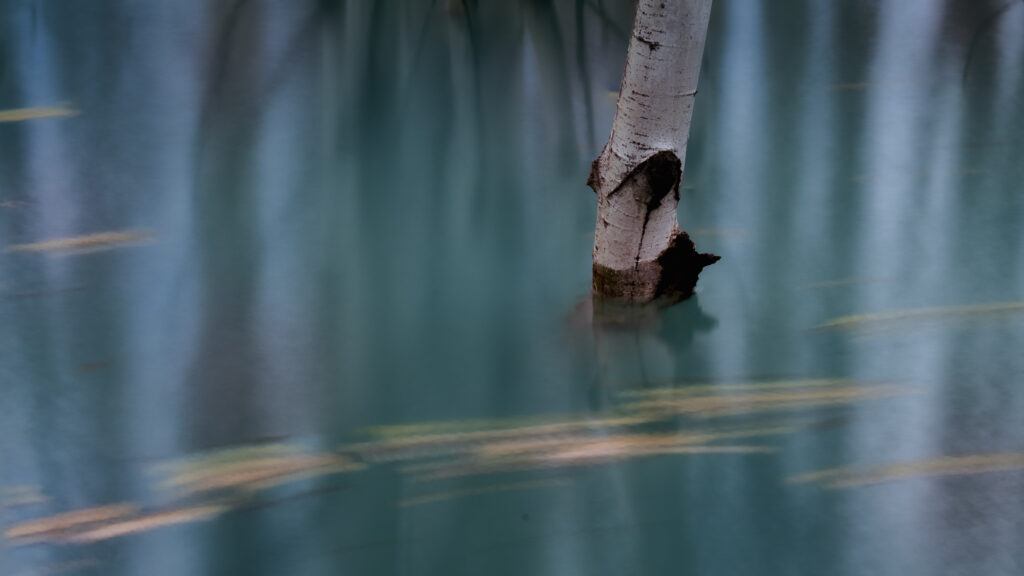
4:30 pm: Return to the lake. One thing we love about Abraham Lake is the multiple photography options that it offers. We could spend several days just photographing the lake, the trees, the mountains…
10:00 pm: It’s been a long day…
We get into our rooms tired, but happy with the experiences lived and moments captured.
Sleep well because another sunrise awaits!
Photography Goals:
- Sunrise, golden hour and blue hour at Moraine Lake
- Afternoon photos of flooded aspens and drone shots at Abraham Lake.
- Sunset, golden hour and blue hour at Abraham Lake
- Practise focus stacking
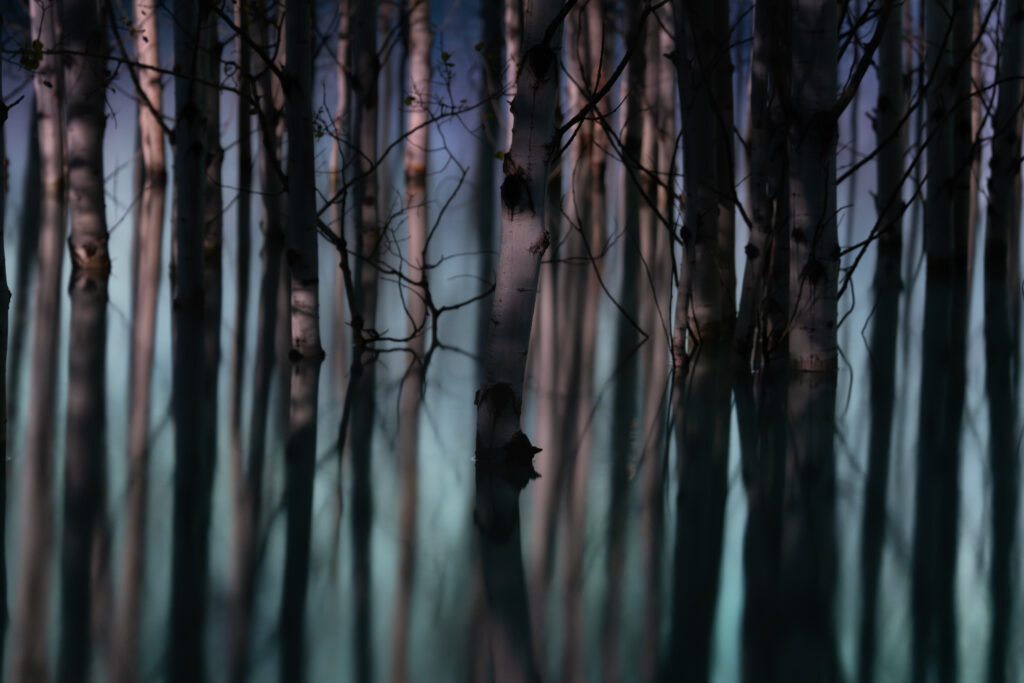
Day 3. Quarry Lake Gold Rush & The Turquoise Fox
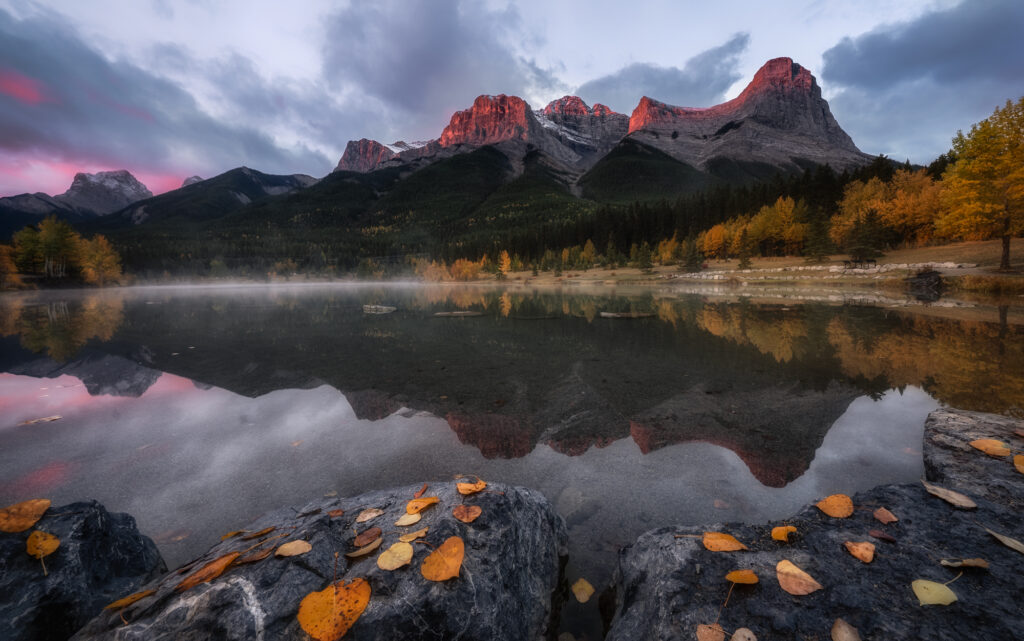
6:00 am: Another day, another Sunrise! The good news is that the shooting spot is not far from our hotel in Canmore 🙂
In the late 19th and early 20th centuries, Canmore flourished as a significant coal-producing town in Alberta, transitioning to a focus on oil and gas in the mid-20th century.
Quarry Lake, our sunrise location, originally an open-pit coal mine, was transformed into a recreational area by the late 20th century, symbolizing Canmore’s shift from industrial mining to tourism. The park is managed by the Rocky Mountain Heritage Foundation and the Town of Canmore.
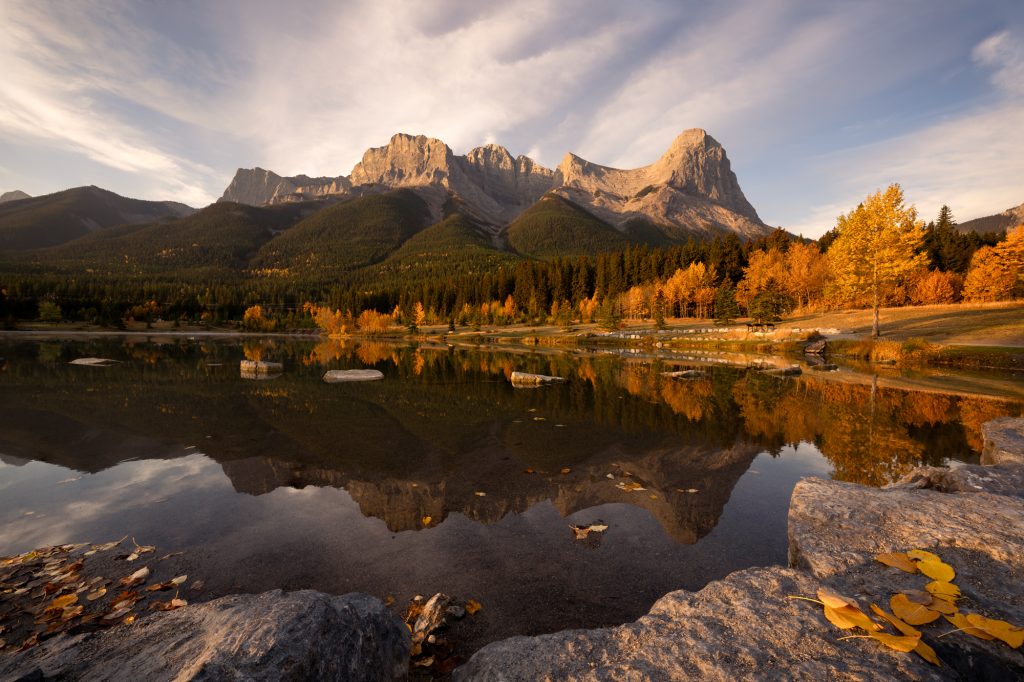
It’s a peaceful place ideal for enjoying the surrounding peaks and the early autumn colours in the trees.
9:00 am: Breakfast at a local Cafe.
10:30 am: Down time at the hotel.
1:00 pm: Class Time: Focus Stacking in post, and how to edit Milky Way skies with Blue Hour foregrounds
3:30 pm: Imagine the crisp, early afternoon of Banff’s fall season, when the air is filled with the echoing bugles of elk. This is the rutting season, a time when male elks, adorned with magnificent antlers, vie for the attention of the females.
Photographing the elk rut is an exercise in patience and respect for wildlife; it requires keeping a safe distance, using long lenses, and often waiting silently for hours.
The reward is capturing the raw power and drama of nature: the clashing of antlers, the intensity in the elk’s eyes, and the stunning backdrop of Banff’s mountains and forests, all bathed in the soft, golden light of autumn. Photographing the Elk is not guaranteed, but it’s worth trying for!
Also, watch out for other wildlife (moose, bears, wolves, lynx or foxes, and wild horses)
Fingers crossed!
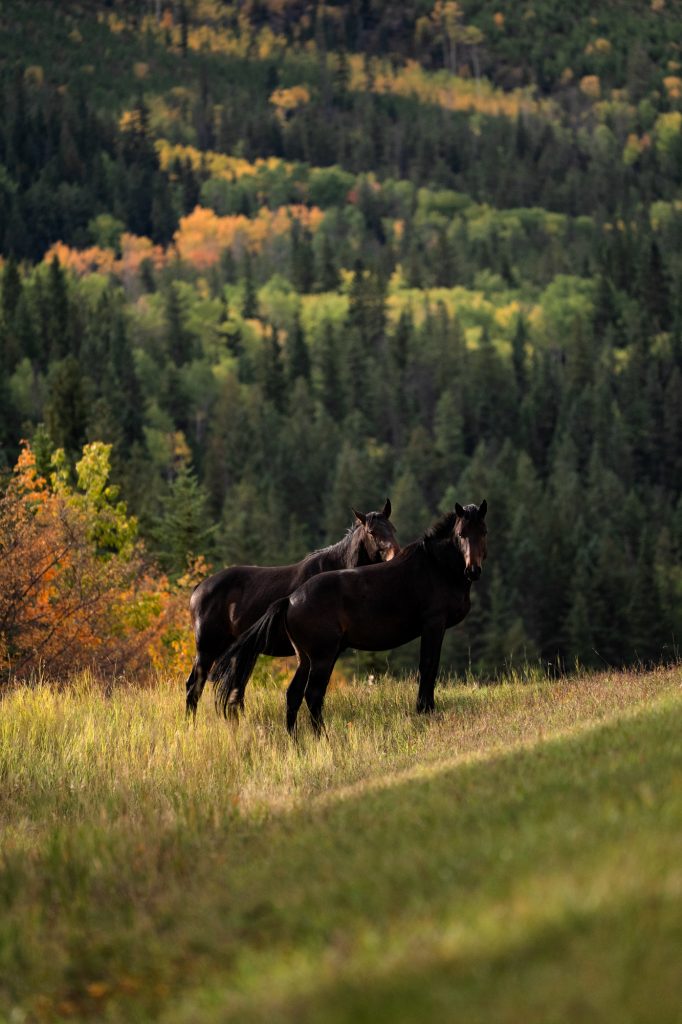
6:00 pm: We’re going to photograph sunset and hopefully aurora at the beautiful Peyto Lake. Do you see the fox?
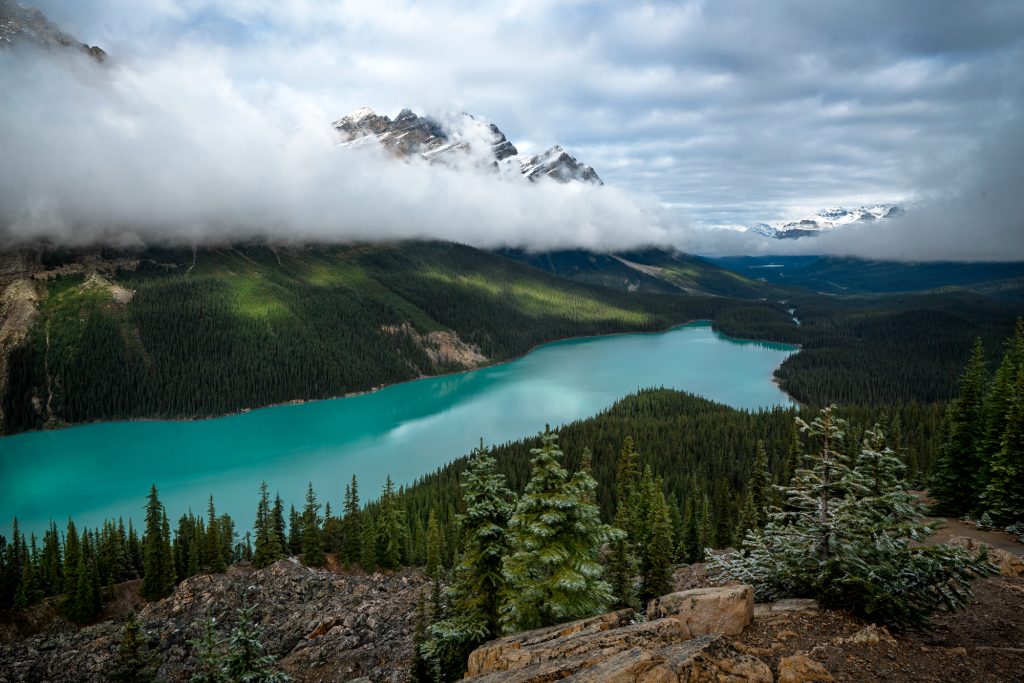
Owing its existence to Peyto Glacier, Peyto Lake is a natural masterpiece, a jewel nestled in the heart of the Canadian Rockies. Its vibrant turquoise waters, surrounded by majestic mountains and pristine wilderness, create a sensory experience that is nothing short of extraordinary.
Now, add to the mix that the lake has the shape of the head of a fox (see photo above) and that we’ll be framing north… And we couldn’t ask for a better place to photograph the Aurora.
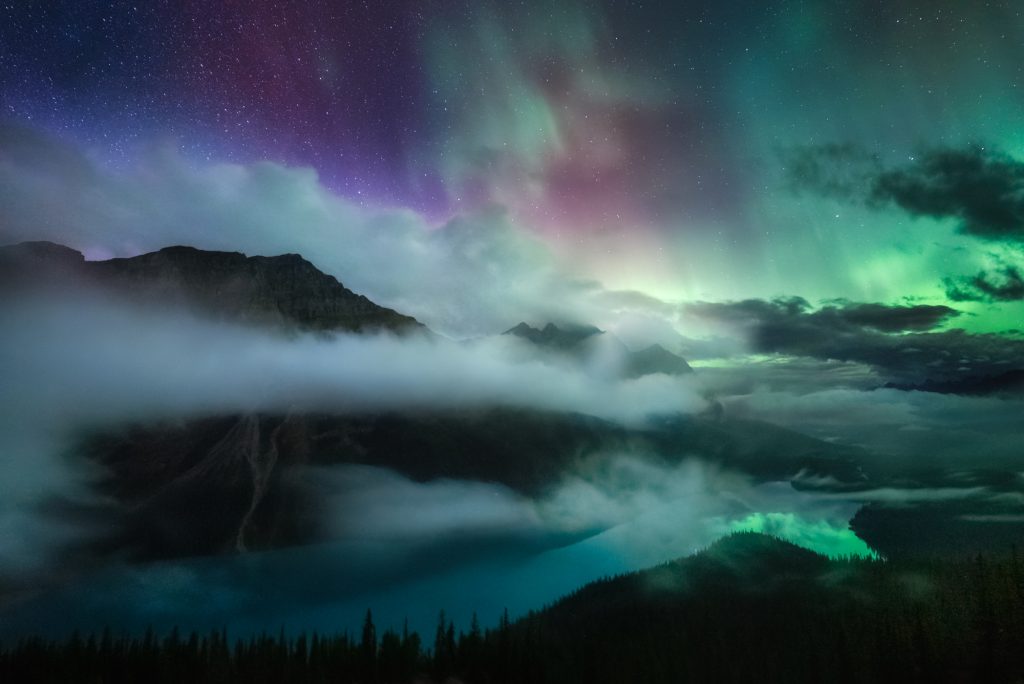
8:00 pm: If there are chances of photographing the Aurora, we’ll have a picnic dinner in the field and we’ll stay out to enjoy the spectacle! The foggy aurora image above was taken at Peyto Lake on a night with a big (70%) moon setting just behind the peak.
If the Aurora is not dancing for us, we will return to the hotel and enjoy a well deserved rest because tomorrow I have a surprise lined up for you!
Photography Goals:
- Sunrise, golden hour and blue hour at Quarry Lake.
- Elk rutting in the meadows of Banff.
- Sunset, golden hour and blue hour at Peyto Lake.
- Aurora at Peyto Lake (if the Aurora is visible).
Day 4. I have a surprise for you!
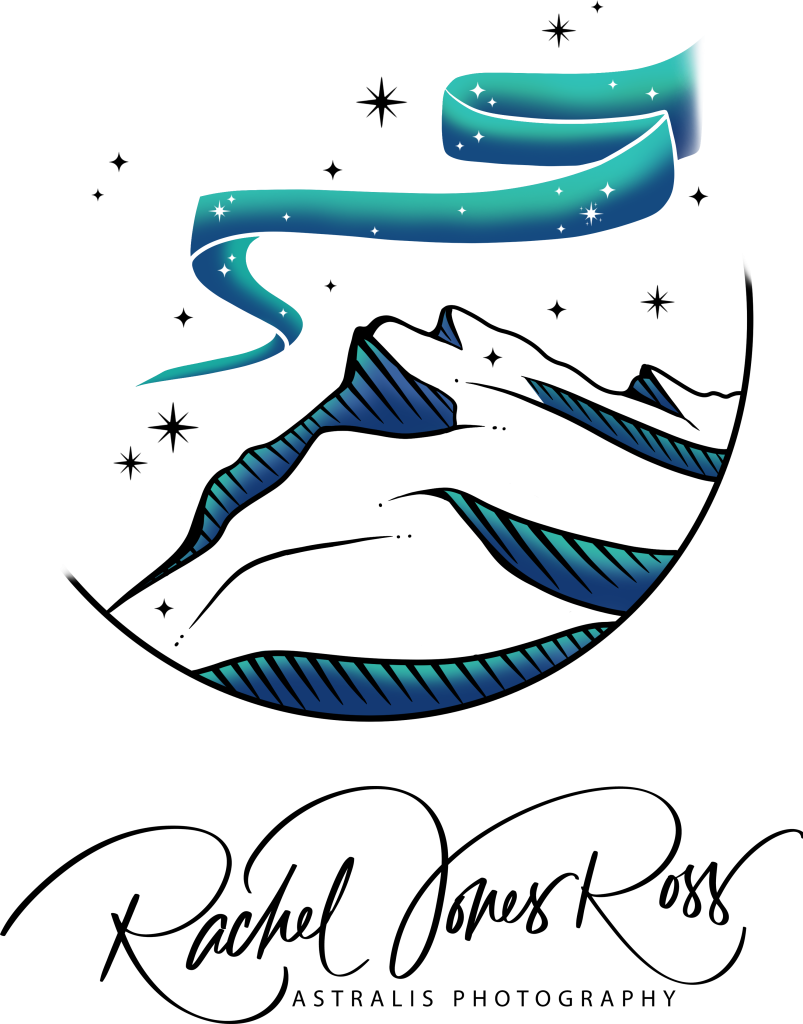
I’ve been giving you lots of details of this amazing expedition to the Canadian Rockies. Maybe too many… But on this day, I have something special planned.
What will that be?
Well, you’ll have to join us to find out! 😛
Day 5. Mount Rundle & The Canadian Pacific Railway
6:00 am: After a relaxing sleep and a short drive, we arrive at Vermilion Lakes, our Sunrise destination in Bow Valley. Here the view of Mount Rundle (2,948m or 9,672ft) and Sulphur Mountain (2,451m or 8,041ft) is spectacular.
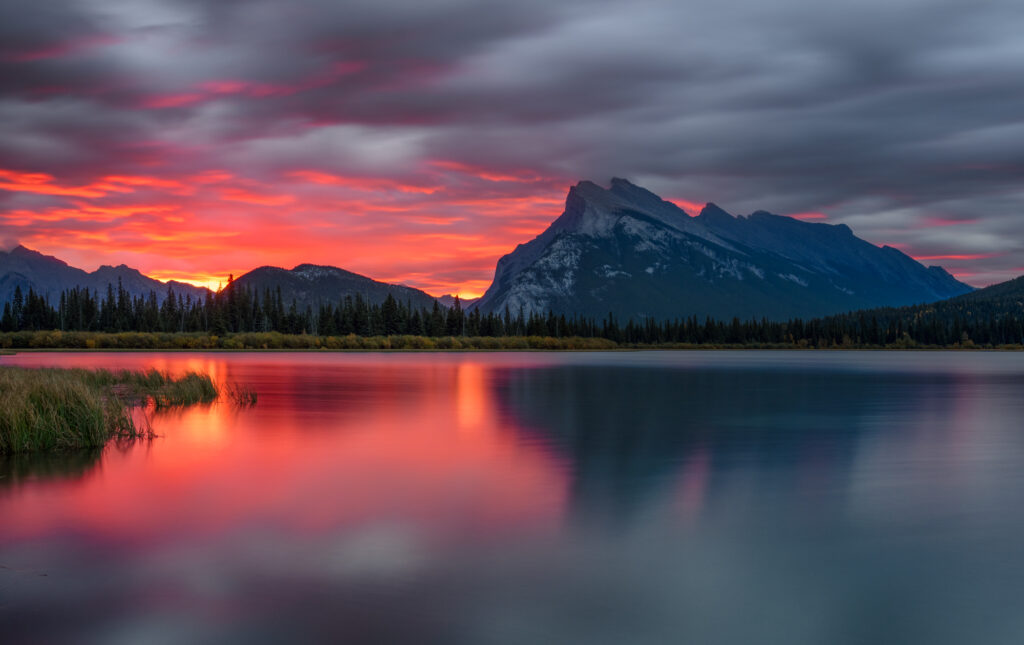
We’re shooting towards the south-eastern horizon. The Sun is rising in the east casting golden light on Mount Rundle’s unmistakable peak.
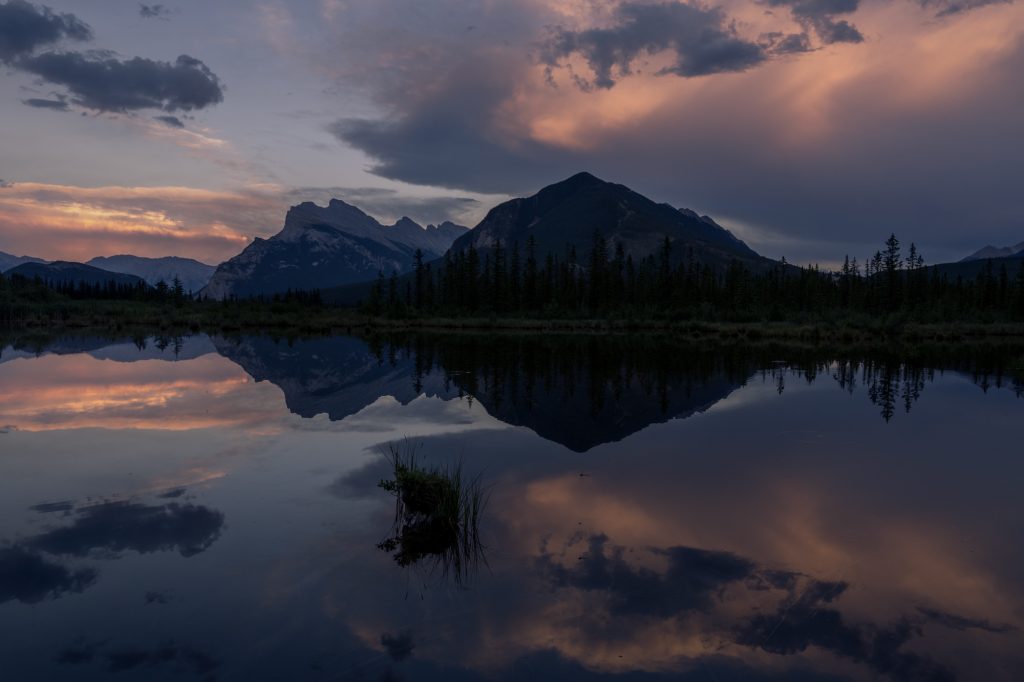
Even on a cloudy day, this peak is captivating.
9:00 am: Breakfast at a local Cafe.
10:30 am: This is our second attempt to photograph the Elk Rutting in the meadows of Banff. Have your telephoto lenses ready!
12:00 pm: Downtime at our hotel and lunch on your own.
2:00 pm: Class on editing wildlife photos with Bryan.
4:00 pm: Dinner at a pizza place we like 🙂
6:00 pm departure for our sunset spot – Morant’s Curve
Morant’s Curve gets its name from Nicholas Morant, a photographer working for the Canadian Pacific Railway in the mid 20th century. His photos helped promote the railway and the Canadian Rockies.
So, in addition to the stunning mountains and the Bow River, the Canadian Pacific Railway train wraps itself through the beautiful scenery.
And this is what we want, to photograph the Red Engine train slowly travelling along the valley, next to the Bow River through the mountains: Mount Temple (3,544m or 11,627ft), Mount Aberdeen (3,152m or 10,341ft), Popes Peak (3,163m or 10,377ft), and Waputik Peak (2,755m or 9,039ft).
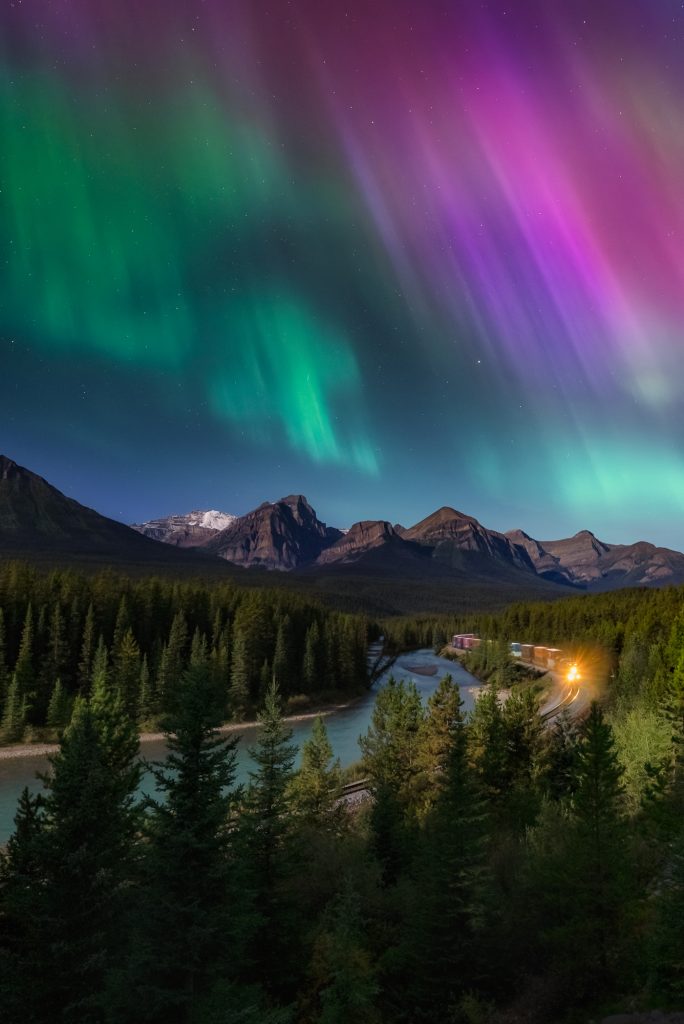
Okay, that is not a sunset image of the famous curve but I can’t help but share this photo! On September 17th, 2024, we had a large solar storm during a full moon. The moon rose along the valley from the east, lighting up the peaks and casting moonbeams amongst the evergreens while the aurora danced overhead! It was a night I will never forget!
This beautiful scene can be captured in so many different types of light. We may visit on a day with early morning fog rolling through the valley instead, and choose another location for sunset. My goal is always to capture each location of the majestic Rockies in the best possible light. If our best possible light is aurora, we will adjust our plan accordingly!
As we wait for the train, I can teach you timelapsing techniques. This location offers endless creative opportunities in a wide variety of conditions.
9:00 pm: Time to go to bed. Tomorrow we have another big day!
Photography Goals:
- Sunrise, golden hour and blue hour at Vermillion Lakes
- Elk rutting in the meadows
- Sunset, golden hour and blue hour at Morant’s Curve
Day 6. The Three Sisters & Crowfoot Mountain
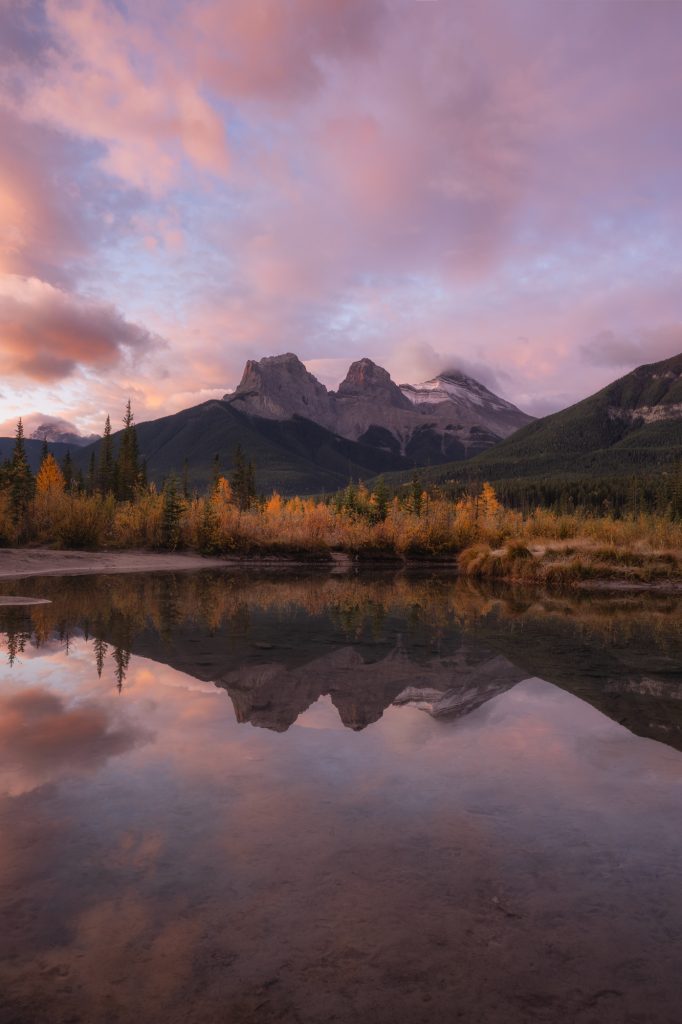
6:30 am: Today we’ll photograph sunrise at The Three Sisters…
Back in 1883, during Canmore’s era as a coal mining hub, Albert Rogers observed the trio of peaks after a snowy tempest, their white summits resembling veiled nuns, and aptly dubbed them the “Three Nuns. However, by 1886, renowned geologist and mapmaker George Dawson had christened them the Three Sisters.
Each peak also bears its own name: Big Sister (2936 m, 9632 ft), Middle Sister (2769 m, 9084 ft), and Little Sister (2694 m, 8838 ft), symbolically representing Faith, Hope, and Charity.
The Sun will rise in the east, casting its morning golden light on the three emblematic peaks. Time to press the shutter!
9:00 am: Breakfast at the Rocky Mountain Bagel Co. (my favourite breakfast stop in Canmore!)
10:30 am: Downtime at the hotel.
2:00 pm: Class time – how to aurora images.
5:30 pm: Depart for our last sunset shoot.
Bow Lake is located on the Icefields Parkway, about 1h away from our lodge. The impressive rock wall of Crowfoot Mountain (3,055m or 10,023ft), the glacier, and the infinite Wapta Icefield provide us with a jaw-dropping photo opportunity.
As the Sun goes down, we hope for Crowfoot Mountain to catch a bit of golden light from the side.
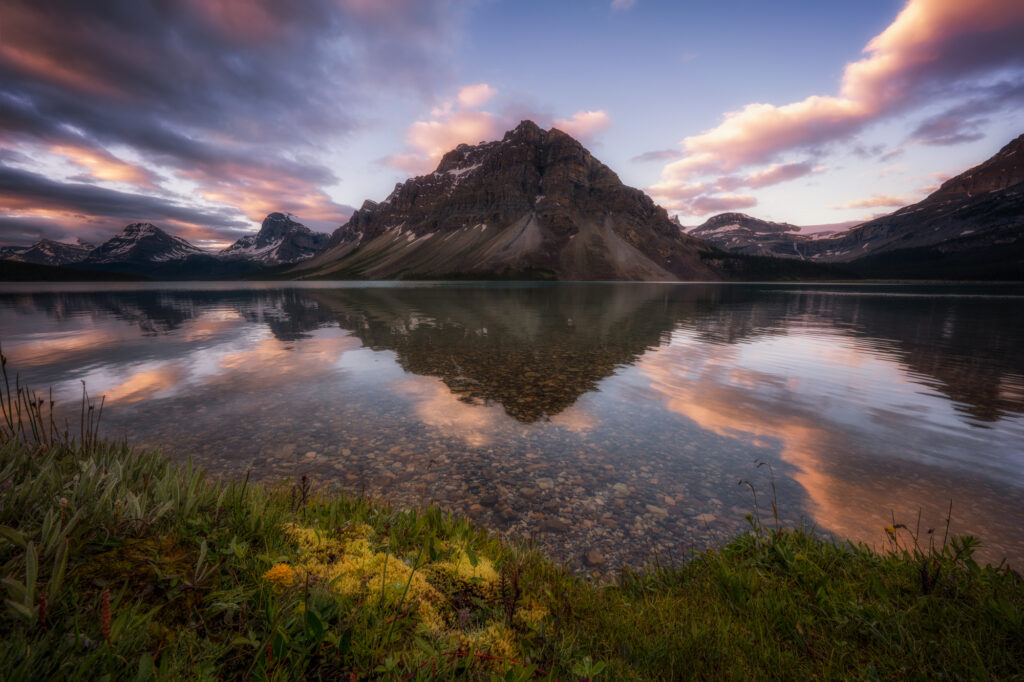
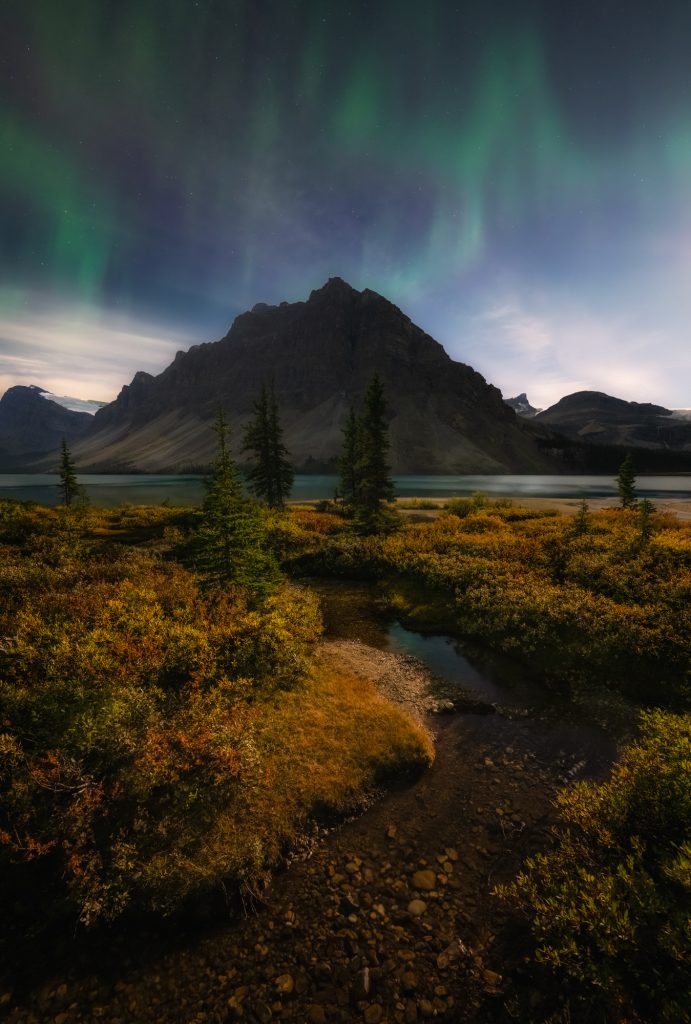
Oops! That image isn’t a sunset either… It’s a moonlit foreground with gentle waves of aurora dipping south as the northern lights blaze across the Northern sky.
I am absolutely enraptured by how the moon makes the autumn colours pop in this scene. This was a full moon night. The light from the moon was so bright that I was able to use autofocus to focus-stack the foreground!
It’s been a long long day…
From Sunrise to Sunset, and then at night, we’ve been chasing the golden light, the sun and the moon
Tomorrow one last adventure awaits!
Photography Goals:
- Sunrise, golden hour, blue hour with the Three Sisters.
- Sunset, golden hour, and blue hour at Bow Lake.
- Crowfoot Mountain under the moonlight at Bow Lake.
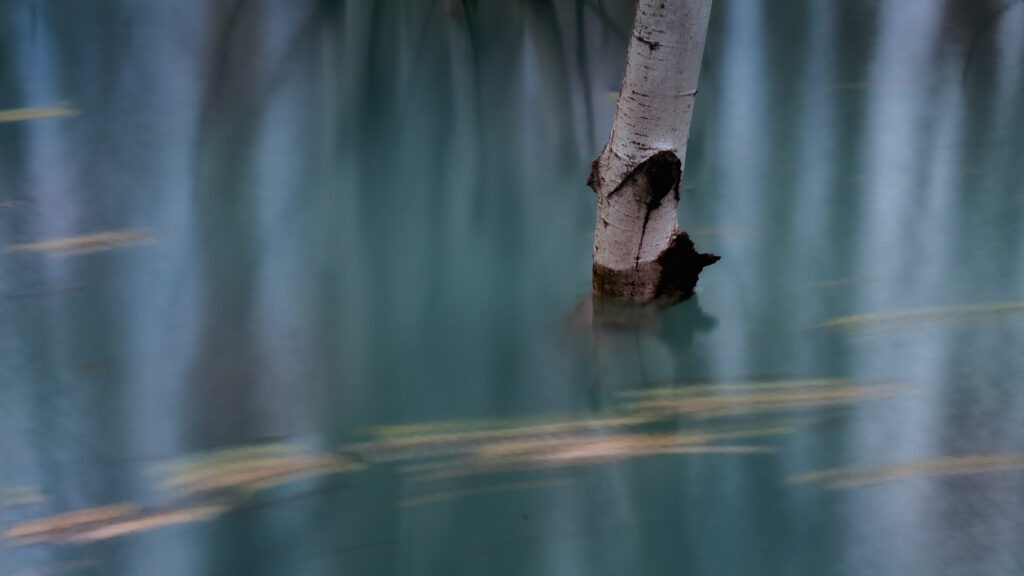
Day 7 – The Farewell
One last Sunrise in the Rockies…
This time involving a beautiful lake and Mount Rundle (2,948m or 9,672ft).
The shooting spot is by Two Jack Lake. We’re shooting, pointing to the East, towards Mount Rundle and the Sunrise direction.
At some point, we’ll see the Sun appear behind the majestic peak. Giving us a great opportunity to photograph one last Sunburst.
10:00 am: Breakfast at Juniper Bistro (a farewell staple on my trips!).
After a copious breakfast at Juniper Bistro, we will make our way back to Calgary Airport, where we expect to arrive at about 2:00 pm.
It’s time to say goodbye.
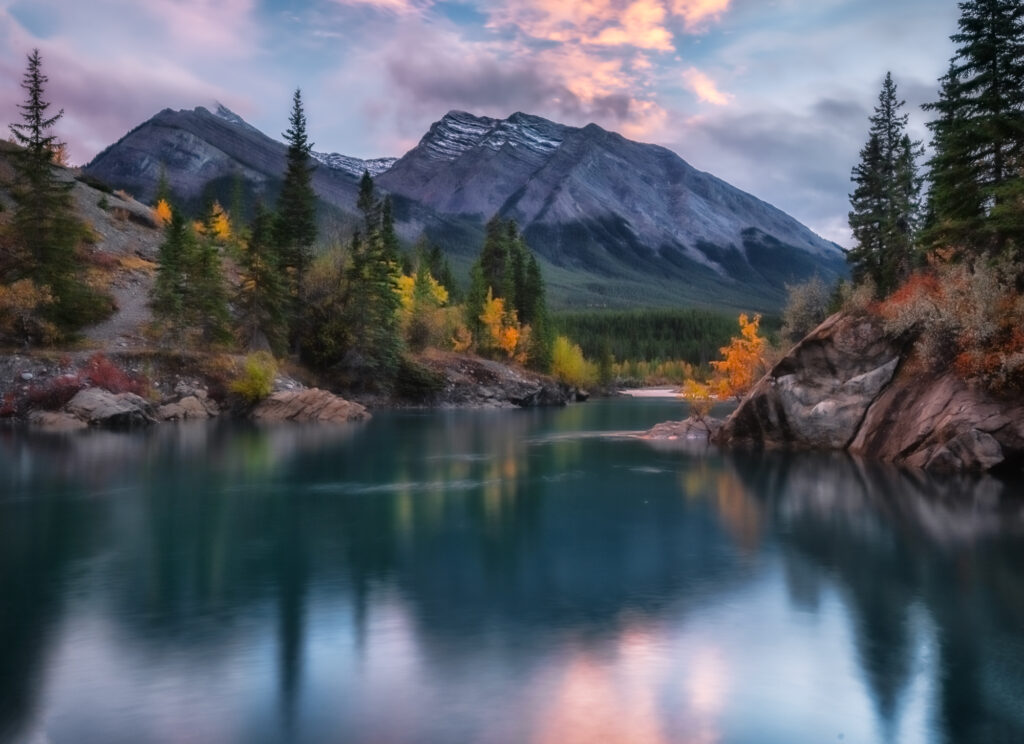
What’s included in the price
- A 7-day expedition photographing the Canadian Rockies
- 7 days of learning, fun and adventure with Rachel Jones Ross and Bryan Peters
- 6 nights of lodging (single room).
- All activities on the surprise day.
- Ground transportation during the expedition.
- All transfers.
What’s not included
- Flights/transport to Calgary, Canada.
- Medical and travel insurance coverage (strongly recommended).
- Breakfast, lunch & dinner.
- Snacks, alcohol and beverages.
- Anything not mentioned in the “included” list.
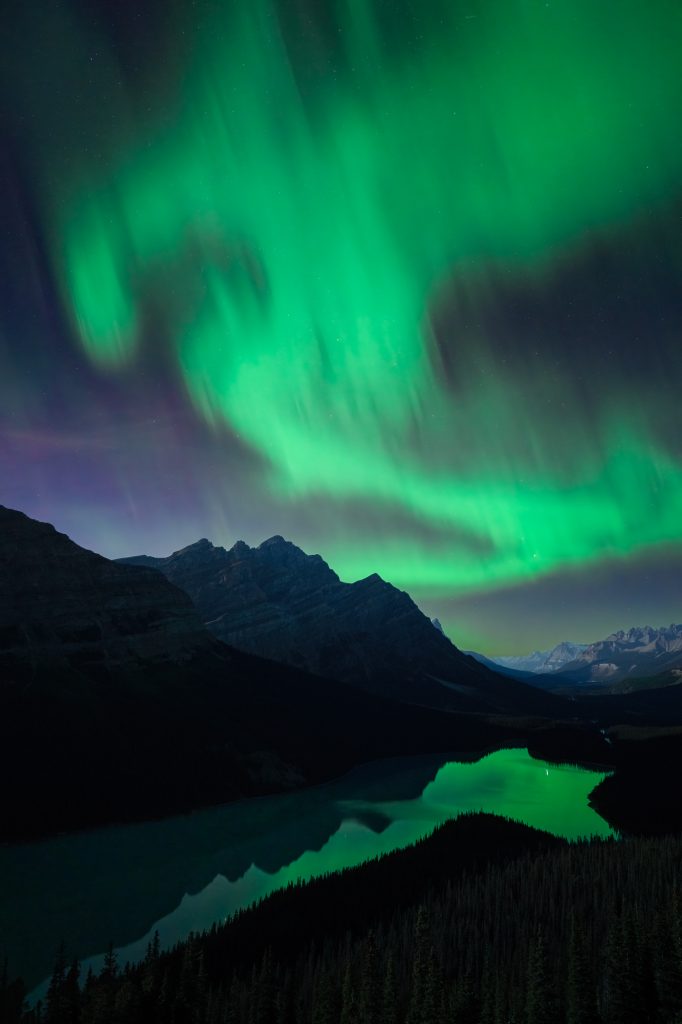
Essential Equipment for the Canadian Rockies Photography Workshop:
- Camera with an interchangeable lens
- A fast wide angle lens (f2.8 or faster) for aurora shooting (12-24 or 14 mm are ideal focal lengths but 16 mm will work)
- A mid-range (24-70 mm or 24-105 mm; any aperture range)
- Long lens (100-400 mm, or 200-600 mm are ideal; 70-200 mm will suffice) for wildlife and long lens shots of mountains and trees
- A *sturdy* tripod with a ball head.
- Shutter release (recommended but not essential)
- Polarizing filter – this is essential gear for photographing water
- Neutral density filters for shooting flooded aspens
- Extra batteries
- Warm clothes that you can layer – the temperature in September is really comfortable, but it can be cool overnight
- Hiking poles for balance
- Drone!
About Me
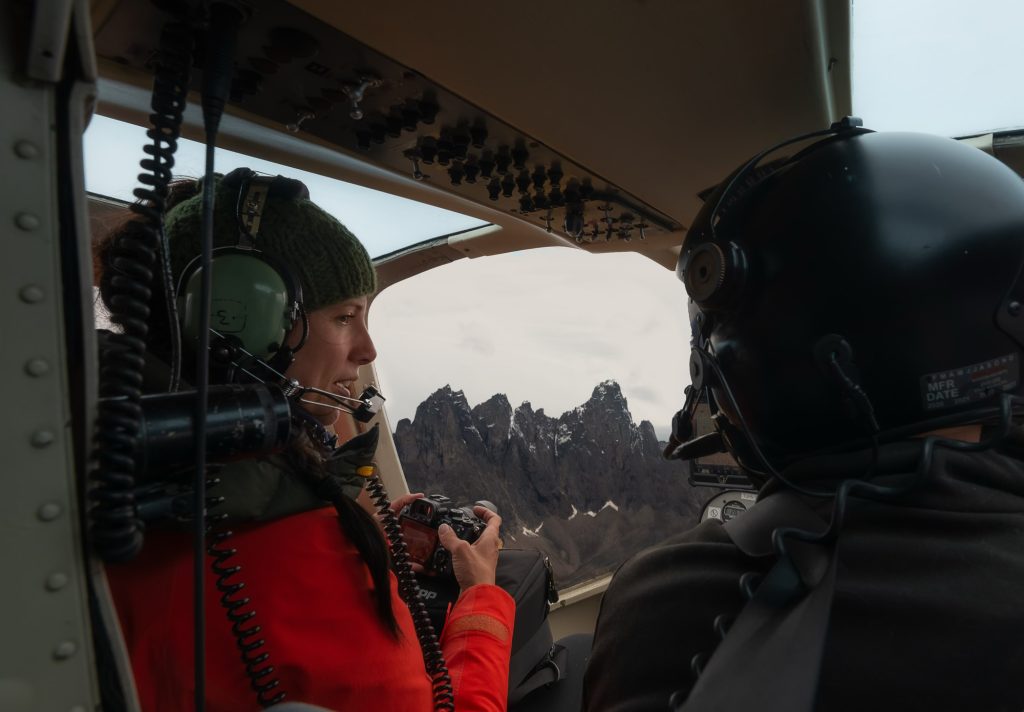
I am an avid stargazer, explorer, and traveller. My photography is deeply inspired by the night sky, and the stories it tells. I utilize and teach a series of techniques to capture starry landscape images which allow me to turn tiny hints of light into detailed scenes of our place on Earth. I am a member of the Sony Alpha Imaging Collective, and a PhotoPills Master.
My home is in the Canadian Rockies. I know every inch of foreground at the locations we will visit, how the light changes through each season and where temperature differences will be most likely to produce foggy conditions. Most importantly, my many years of experience enables me to easily find alternate locations or make alternate plans if something doesn’t go the way we expect.
Dates & Prices:
September 26 – October 02, 2026 (2 spots open)
October 03-09, 2026 (3 spots open)
September 23-29, 2027
This edition of the September in the Rockies Photography Workshop will involve short walks from the car. If hiking isn’t an option for you because of sore knees, or difficulty carrying your gear for long distances, this workshop is for you. This workshop will challenge you to expand your photography skills without putting extra strain on your body.
The total cost of the workshop is $4995 USD. A $1500 deposit is required to reserve your spot.
When you book your spot, you will have access to a PDF outlining logistics, packing advice, and connecting with the group. If you do not see the download link, or your receipt, please add rachel@astralisphotography to your contacts and check your spam folder!
Don’t hesitate to use the contact form if you have any questions!
